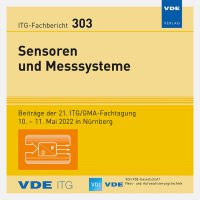Low-Cost Efficient Indirect Power Monitoring Method for Optimization of Reconfigurable Analog Readout Circuits with Self-X Capabilities
Konferenz: Sensoren und Messsysteme - 21. ITG/GMA-Fachtagung
10.05.2022 - 11.05.2022 in Nürnberg
Tagungsband: ITG-Fb. 303: Sensoren und Messsysteme
Seiten: 5Sprache: EnglischTyp: PDF
Autoren:
Zaman, Qummar; Alraho, Senan; Koenig, Andreas (Lehrstuhl Kognitive Integrierte Sensorsysteme (KISE), TU Kaiserslautern, Germany)
Inhalt:
In this work, an efficient indirect measurement method is presented to optimize the performance of sensory readout electronics with self-X (self-calibration, self-healing self-adaptation, etc.) properties. The low-cost test signals are applied to the device under test (DUT), and the output transient response is observed using total harmonic distortion (THD) to correlate the device’s characteristics. Due to the search space complexity of the DUT, a population-based evolutionary algorithm is being used as an optimizer. Furthermore, a cost-effective indirect power monitoring scheme is being proposed to involve the power dissipation constraint during the optimization process. It helps to enhance system power efficiency, long-term reliability and insurance of accomplishing a safe reconfiguration pattern in the analog evolvable circuits. The feasibility of this approach is evaluated by a case study using an indirect current-feedback instrumentation amplifier on XFAB 0.35 µm CMOS technology. With the integration of the power monitoring module, the average power consumption of the DUT reduces roughly by 25% as compared to previously presented work in [1]. Results from the simulation test demonstrated the accurate estimation of the DUT characteristics from the low-cost test configuration with the average achieved THD value of -78.19 dB.


